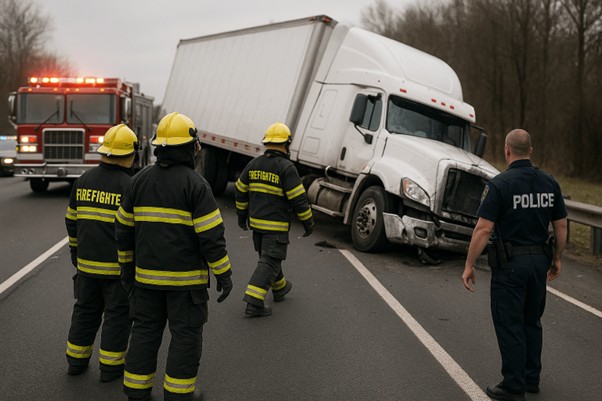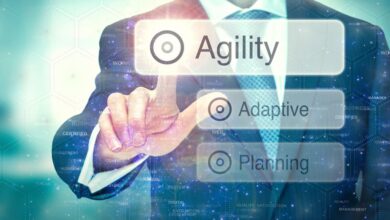Inside the Black Box: How Telematics and ECM Data Rebuild a Crash

If you want a quick primer from someone who knows the ropes, think of expert trucking as the people who can translate a truck’s digital heartbeat into plain English after a crash. In the split seconds before, during, and after a collision, modern trucks record a staggering amount of information. The job of the trucking witness is to gather, interpret, and explain that data so that rules, liability, and human stories make sense to judges, juries, and families.
What the machines record and why expert trucking teams care
Electronic Control Modules (ECMs), event data recorders (EDRs), telematics units and GPS trackers all capture different slices of the same story: vehicle speed, engine rpm, throttle and brake signals, steering angle, ABS activity, and sometimes even seatbelt or airbag deployment timing. These devices can provide pre-crash snapshots and, in some systems, a few seconds of pre-event history that are critical for reconstructing causation and sequence. Investigators and expert trucking analysts rely on these recorded streams because they remove some of the guesswork that comes from witness memory alone.
How GPS logs and sensor streams fit into the picture for reconstructions
GPS logs add a spatial layer of exact positions, headings, and speeds sampled at regular intervals that can be merged with time-stamped ECM data to create a continuous narrative of a vehicle’s path. Telematics platforms frequently record accelerometer data, harsh-braking events, and discrete trigger points that can be cross-checked against the physical scene. For expert trucking reconstructions, synchronizing timestamps between the truck’s on-board systems and crash-scene video or traffic-camera footage is often the moment when a theory becomes a near-fact: you can say not just “when” a truck braked, but precisely where on the road it happened and how the vehicle responded.
The expert’s job: preserve, extract, interpret: the three pillars for trucking work
An expert trucking investigator starts with preservation: securing the control module, safeguarding telematics access credentials, and documenting chain-of-custody so the digital evidence is admissible in court. Extraction requires certified tools and vendor software to download raw ECM or telematics datasets without altering metadata. Interpretation is the craft: transforming columns of numbers into a timeline, explaining anomalies (was that a sensor fault or real input?), and running physical models that translate longitudinal acceleration into stopping distance and collision energy. The National Highway Traffic Safety Administration (NHTSA) has extensive guidance on the types of data EDRs may carry and how that data can inform investigations, which helps shape accepted forensic practice.
Modeling the event: simulations, assumptions, and how experts test them
Reconstructionists use the recorded data as inputs to physics-based models and simulation software braking curves, mass distribution, load-shift effects, and tire-road friction estimates are all variables that affect outcomes. An expert trucking analyst will run multiple scenarios to test sensitivity: what if the road was wet, or the trailer’s cargo shifted two feet to the left? By comparing simulated trajectories with onboard logs and scene evidence (skid marks, debris fields, vehicle rest positions), the analyst refines the model until it fits the empirical data within reasonable bounds. That rigor is what separates persuasive expert opinion from conjecture.
Legal weight and courtroom strategy
When digital data is cleanly preserved and clearly explained, it carries strong weight in court because it’s objective and quantitative. Still, admissibility depends on chain-of-custody, validated extraction methods, and a clear explanation of methodology to the judge. Experts in expert trucking cases often provide demonstrative exhibits, synchronized timelines, animations, and annotated charts to turn raw logs into narratives a jury can understand. Agencies and investigators also increasingly rely on telematics and EDR data during formal inquiries, and that cross-agency practice is reflected in published federal guidance that shapes expectations for evidence handling.
Limits, blind spots, and why scepticism matters
Digital records are powerful, but they’re not omniscient. ECMs and telematics may have gaps, different sampling rates, or calibration errors; GPS can drift in canyons or under bridges; and some manufacturers store only brief pre-event buffers. An expert trucking analyst must therefore identify what the data does not show as much as what it does. Privacy and security concerns also appear when remote telematics streams are involved: investigators need clear legal authority and careful procedures to obtain vendor-held data, and courts pay attention to how that data was collected and preserved.
Practical steps fleets and attorneys can take
If you manage a fleet or are advising a plaintiff or defense, the practical playbook is straightforward: document everything at the scene, preserve devices and power sources, make immediate forensic requests to telematics vendors, and engage qualified expert trucking reconstructionists early. Quick action reduces the risk of overwritten buffers or lost telemetry, and experienced experts can often triage early downloads and indicate whether further specialized extraction (for example, manufacturer-level ECM reads) is necessary.
Why trucking expertise is now central to fair outcomes
The digital footprint of a commercial vehicle can turn chaotic stories into verifiable timelines. But raw data alone isn’t a verdict; it’s an evidentiary tool that must be handled by professionals who understand sensors, software, physics, and the legal standards for evidence. For families, victims, carriers, and courts alike, relying on thoughtful expert trucking reconstruction preserves both safety and fairness and that’s the heart of what responsible accident investigation should do.



